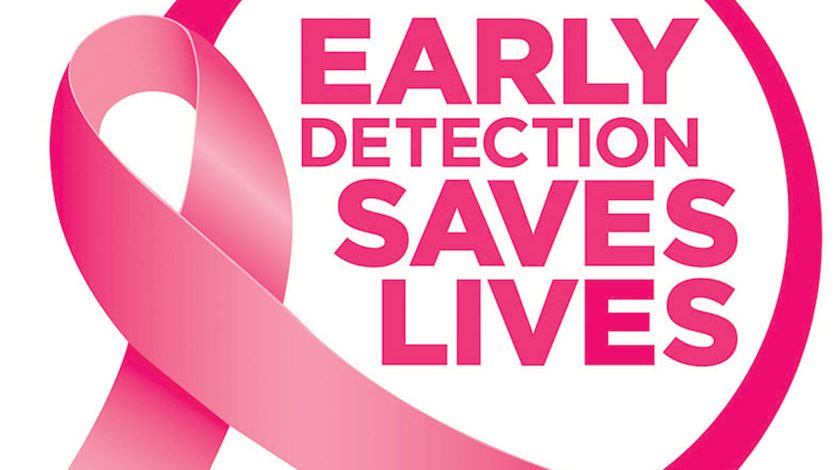Breast cancer is the most common cancer amongst women and occurs nearly 100 times more often in women than in men. It can occur at any age, but the risk goes up as you get older, as two out of three women with invasive cancer are diagnosed after age 55.
The commonly known factors for breast cancer include family history i.e. genetics, early menstruation (before age 12), late menopause (after 55), having your first child at an older age, or never having given birth. However, genetics and age are not the only factors that increase the risk of the disease. According to a research by National Center for Biotechnology Information (NCBI), only 5 -10 per cent of all cancer cases can be attributed to genetic defects, whereas the remaining 90 – 95 per cent has its roots in the environment and lifestyle. The lifestyle factors include smoking cigarettes, diet (fried foods, red meat), alcohol, sun exposure, environmental pollutants, infections, stress, obesity, and physical inactivity. Every year in October ‘Breast Cancer Awareness Month’ is marked in countries across the world to help increase attention and support for its awareness, early detection and treatment. This year, Pink Ribbon Pakistan launched its campaign with the theme ‘Become a better you’. The theme revolves around the lifestyle which can help prevent the disease. “There are three elements in this campaign: health, beauty and confidence. If you are healthy on the inside, it shines through in your appearance and high spirits. The general opinion about breast cancer is that it is a disease commonly found among older, married women. However, in the last five years, girls as young as 17 to 20 years are being diagnosed with the disease. For example, one of the common reasons is the steroid-induced chicken and milk that is consumed, and the chemically treated sugar which acts like a fertilizer for this disease. Experts say that 70 per cent of the time cancer can be avoided by just a lifestyle change,” informs Omer Aftab, CEO Pink Ribbon Pakistan. Lifestyle changes that prevent breast cancer While risk factors like family history cannot be changed, there are lifestyle changes you can make to lower your risk. Physical activity can help you maintain a healthy weight, which helps prevent breast cancer. Most healthy adults should aim for at least 150 minutes a week of moderate aerobic activity or 75 minutes of vigorous aerobic activity weekly, plus strength training at least twice a week. This way you can control your weight, as being overweight or obese increases the risk of breast cancer. This is especially true if obesity occurs later in life, particularly after menopause. Taking combined hormone replacement therapy, as prescribed for menopause, can increase your risk for breast cancer and increases the risk that the cancer will be detected at a more advanced stage. If you’re taking hormone therapy for menopausal symptoms, ask your doctor about other options. Also, one must avoid exposure to radiation and environmental pollution. Medical-imaging methods, such as computerised tomography, use high doses of radiation. You can reduce your exposure by having such tests only when absolutely necessary. Lastly, breastfeeding plays a role in breast cancer prevention. Some studies suggest, the longer you will breastfeed (especially if continued for 11/2 to 2 years), the greater the protective effect. One explanation for this possible effect may be that breastfeeding reduces a woman’s total number of lifetime menstrual cycles (similar to starting menstrual periods at a later age or going through early menopause). Early detection is important Breast self-awareness can help you become familiar with how your breasts normally look and feel. Knowing this will help you identify any changes in your breasts that should be reported to your health care professional promptly. If you find a lump, schedule an appointment with your doctor, but don’t panic – most lumps are not cancer. Changes that you need to look for include: a lump or thickening in or near the breast or in the underarm area; a change in the size or shape of the breast; dimpling or puckering in the skin of the breast; a nipple turned inward into the breast; discharge (fluid) from the nipple; scaly, red, or swollen skin on the breast, nipple, or areola (the dark area of skin at the centre of the breast). Often these symptoms are not due to cancer, but if you notice any changes in your body, tell your healthcare provider immediately so that the problems can be diagnosed and treated. How to perform a breast self-exam In the shower: Using the pads of your fingers, move around your entire breast in a circular pattern moving from the outside to the centre, checking the entire breast and armpit area. Check both breasts each month feeling for any lump, thickening, or hardened knot. Notice any changes and get lumps evaluated by your healthcare provider. In front of a mirror: Visually inspect your breasts with your arms at your sides. Next, raise your arms high overhead. Look for any changes in the contour, any swelling, or dimpling of the skin, or changes in the nipples. Next, rest your palms on your hips and press firmly to flex your chest muscles. Left and right breasts will not exactly match – few women’s breasts do, so look for any dimpling, puckering, or changes, particularly on one side. Lying down: When you’re lying down, the breast tissue spreads out evenly along the chest wall. Place a pillow under your right shoulder and your right arm behind your head. Using your left hand, move the pads of your fingers around your right breast gently in small circular motions covering the entire breast area and armpit. Use light, medium, and firm pressure. Squeeze the nipple; check for discharge and lumps. Repeat these steps for your left breast. Published at THE NEWS INTERNATIONAL






